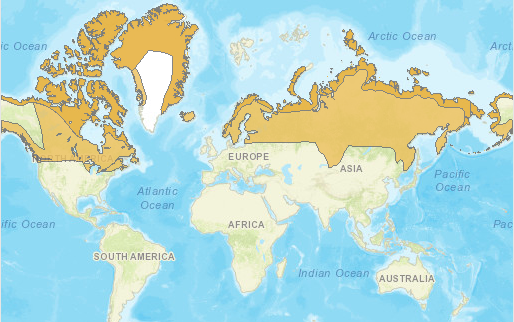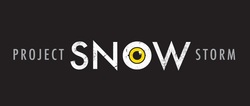-
Natural History
-
SSP
-
Organizations
<
>
|
Habitat and Range
This species has a huge range across predominantly Arctic regions from western Scandinavia through northern Russia to Alaska (USA), northern Canada and Greenland (Denmark), and has also bred occasionally in Iceland and the UK. In winter birds move further south into the USA, northern Europe and north Asia. |
Status & Conservation
In 2017, the IUCN uplisted Bubo scandiacus (formerly Nyctea scandiacus) from Least Concern to Vulnerable on their Red List due to rapid population declines, especially in North America. According to the IUCN, there remains some uncertainty about the overall rate of decline, and if it proves to be even higher, the species may be eligible for further uplisting to Endangered. The species is listed on CITES Appendix II and is not listed with U.S. Fish and Wildlife Service.
In 2017, the IUCN uplisted Bubo scandiacus (formerly Nyctea scandiacus) from Least Concern to Vulnerable on their Red List due to rapid population declines, especially in North America. According to the IUCN, there remains some uncertainty about the overall rate of decline, and if it proves to be even higher, the species may be eligible for further uplisting to Endangered. The species is listed on CITES Appendix II and is not listed with U.S. Fish and Wildlife Service.
|
Date of Last PVA/B&T Plan
6/2017 Current Population Size (N) 33.28.2 (63) Current Number of Participating AZA Member Institutions 35 Projected % GD at 100 years or 10 generations** 55.1% |
|
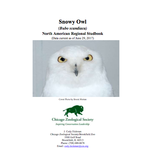
|
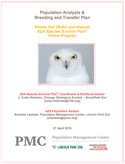
Population Analysis & Breeding and Transfer Plan
Snowy Owl (Bubo scandiacus) AZA Species Survival Plan® Red Program |
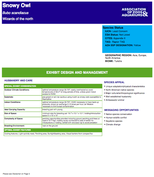
Officers
|
Name
|
Organization
|
Position
|
|
Chicago Zoological Society - Brookfield Zoo
|
SSP Program Leader & Studbook
|
|
Brandywine Zoo
|
Education Advisor
|
Project SnowstormWe have tracked snowy owls for three full seasons, and are actively tagging more this winter. Use these interactive maps to explore their movements in astounding detail.
|

